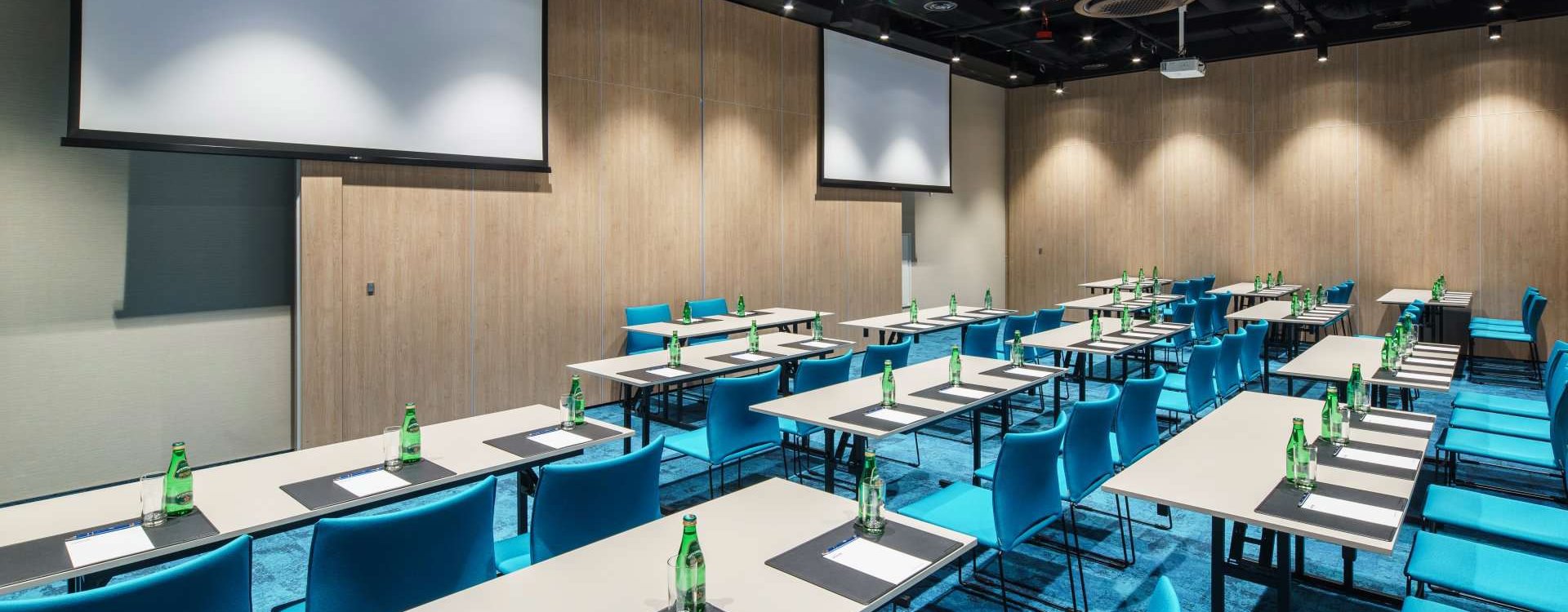1. Face to face conferences - why?

First - clearer communication How many times have you found yourself unable to discern the tone of a colleague's reply to an email? A one-line reply, an exclamation point, a blinking emoji - deciphering the meaning of a text message can be a minefield, especially when communicating across cultures or across borders. Video conferencing isn't much better because body language and other nonverbal cues are overlooked. Subtle changes in facial expressions, hand gestures and eye contact all convey the meaning of what is being said and help ensure that the speaker's message is not misunderstood. Second - relationship building and more attentive participants While it's true that the majority of business interactions last year took place online - whether through email, virtual meetings, or social media - we still place a premium on in-person meetings. According to a Forbes survey, 84 percent of executives say they prefer in-person meetings because of their ability to build stronger and more meaningful business relationships. Conference-goers can focus on networking with industry professionals, building lasting professional relationships, finding tips for hosting cutting-edge meetings or events, and discovering ways to implement new breakthrough strategies in their business. No matter how hard you try to keep people engaged during virtual meetings, some attendees are just naturally more inclined to actively discuss. Third - time and space While we hotel sector professionals create space for your meetings, we also give you time for informal conversations that may seem inappropriate or insincere in a more formal video conferencing situation. A casual chat about soccer, food or Netflix before or after a face-to-face meeting can be just as important to building good business relationships as anything on the meeting agenda. That's the difference between a MEETING and a CONTACT. Clients who take the time to meet with you in person, rather than just clicking on an invitation link, form the strongest business relationships. No matter how hard you try to keep people engaged during virtual meetings, some attendees are just naturally more inclined to actively discuss things.
2. Hybrid events.

Let's start with the fact that the past few months have forced us into a new space and given us perspectives we didn't know about or haven't tried before. We now know that it is logistically feasible to organize and run conferences - including large conferences with hundreds or even thousands of attendees - exclusively online. Hybrid events in 2022, are a multitude of possibilities. Guests of such a meeting can participate virtually or live. Conferences in this form give the opportunity to gather professionals from any industry, organize meetings and events that our customers are interested in. All those technical difficulties that were so impossible to overcome have been pushed aside by Covid. Alternative, digital venues have opened up accessibility in ways that most companies could only dream of before. Venues such as the Seaside Park Hotel in Kolobrzeg have the infrastructure and technical facilities adequately prepared to host events in this form. In surveys conducted among participants of hybrid conferences concerning advantages of such meeting form very similar answers were given. Participants asked about what they like most in virtual conferences compared to those organized in person, answered: the convenience of participating in a meeting at home or in the office, the lack of need to travel (which can allow for a larger number of people participating in the conference and reduces the cost of participation), and less backlog of work stationary. Less obvious advantages were also mentioned - no need to wear makeup, or fewer distractions. It is worth emphasizing that this new communication technique can be fruitful, provided that we use good software and hardware dedicated to web conferencing. In addition, users must be well versed in the technical operation of the online meeting, such as by the organizer sending a short agenda with information on how it is to be held, how to sign up for it, and precise guidelines on what equipment the participant should have in order to use it. The main disadvantages of these meetings are: inability to focus and distracted by work, inability to leave the meeting, inability to network with other attendees, and lack of personal interaction with exhibitors/conference members.
Conclusion:
As we begin to return to our office spaces, the old rules for holding face-to-face meetings will no longer apply. Instead, new social distance guidelines and reduced room capacity mean we will need to change our habits to collaborate effectively and safely. Simply put, in-person meetings can happen anywhere. You can have a one-on-one meeting with a client while walking in the park. You can lead an all-staff meeting in a hotel conference room. You can give a presentation in the back seat of an Uber. But while you can meet almost anywhere, some options are clearly better than others. For us, the value is the people you meet on breaks, at meals, going from room to room - these are those unexpected opportunities to build new relationships that you just can't get on a screen. In conclusion - is there anything more rewarding than, being with people, sharing meals, drinks, conversations and experiences with them?



